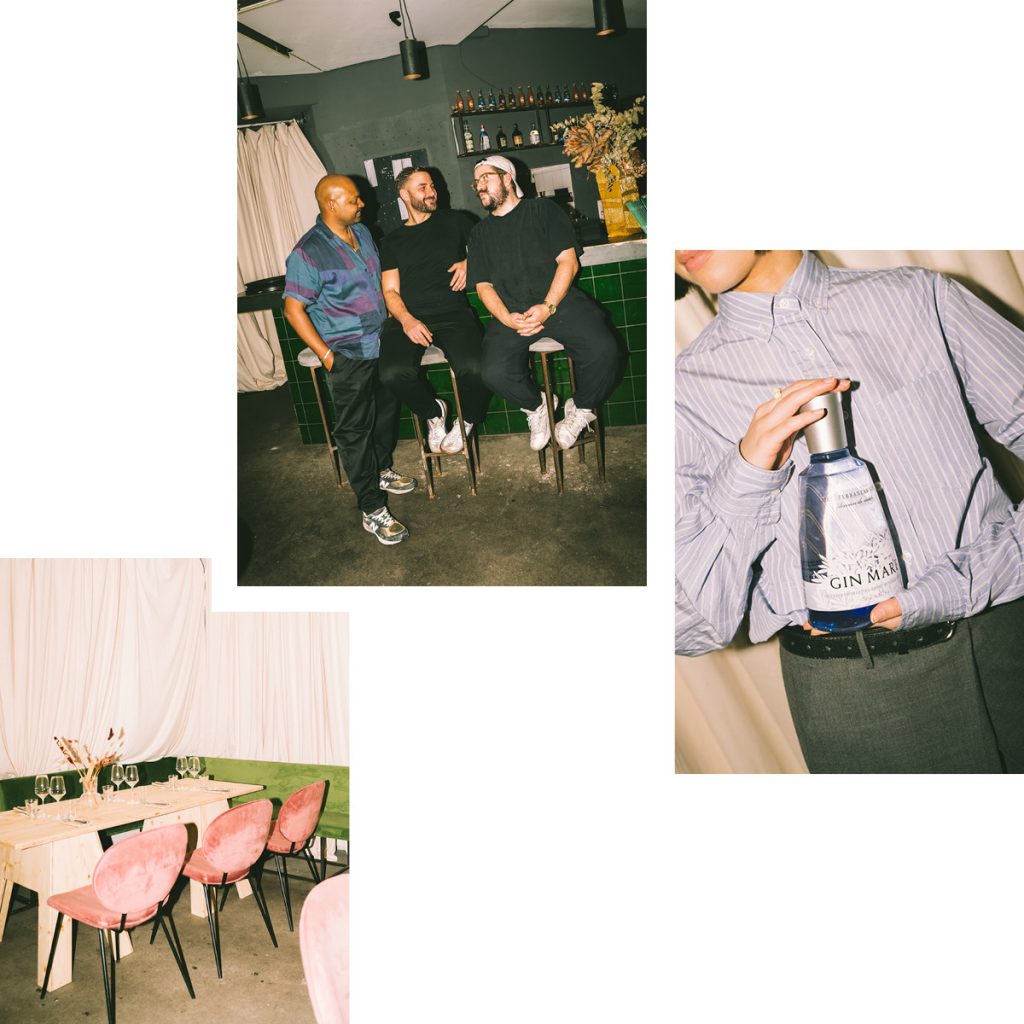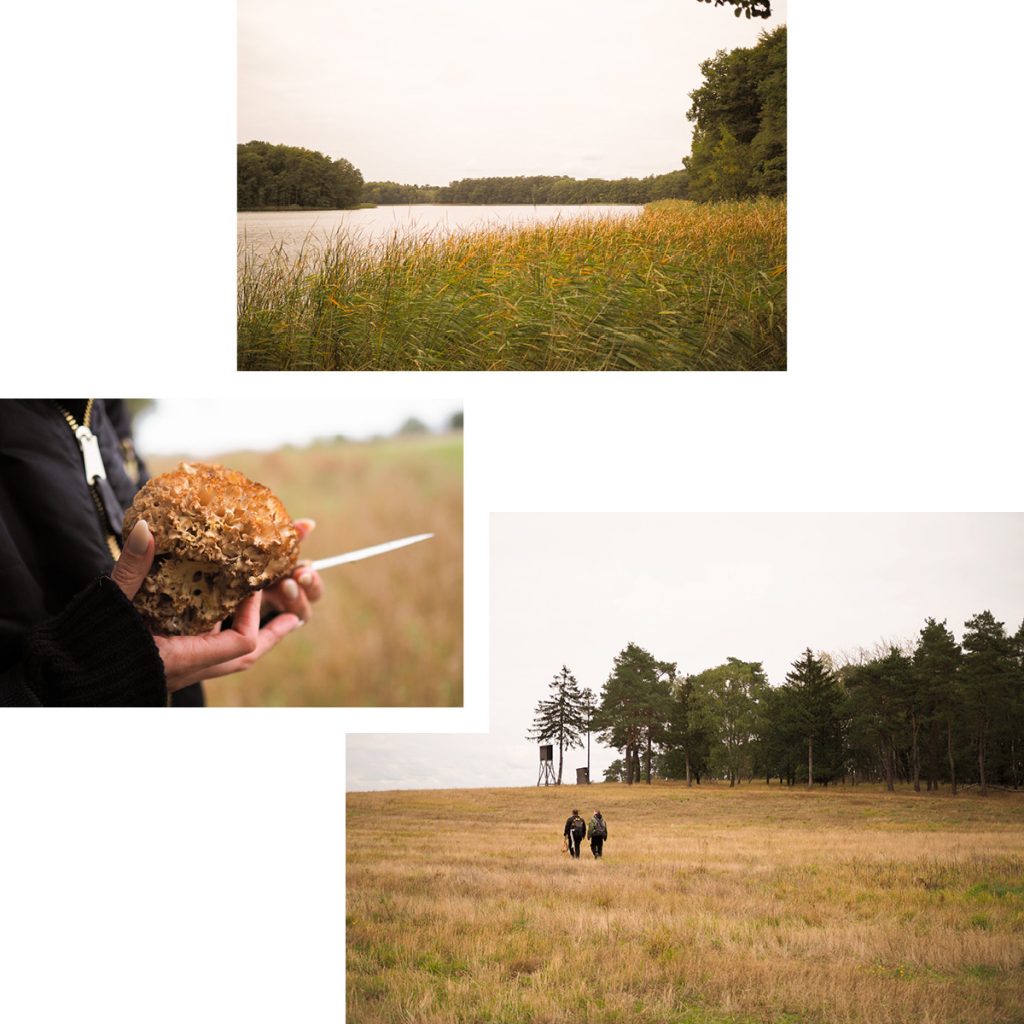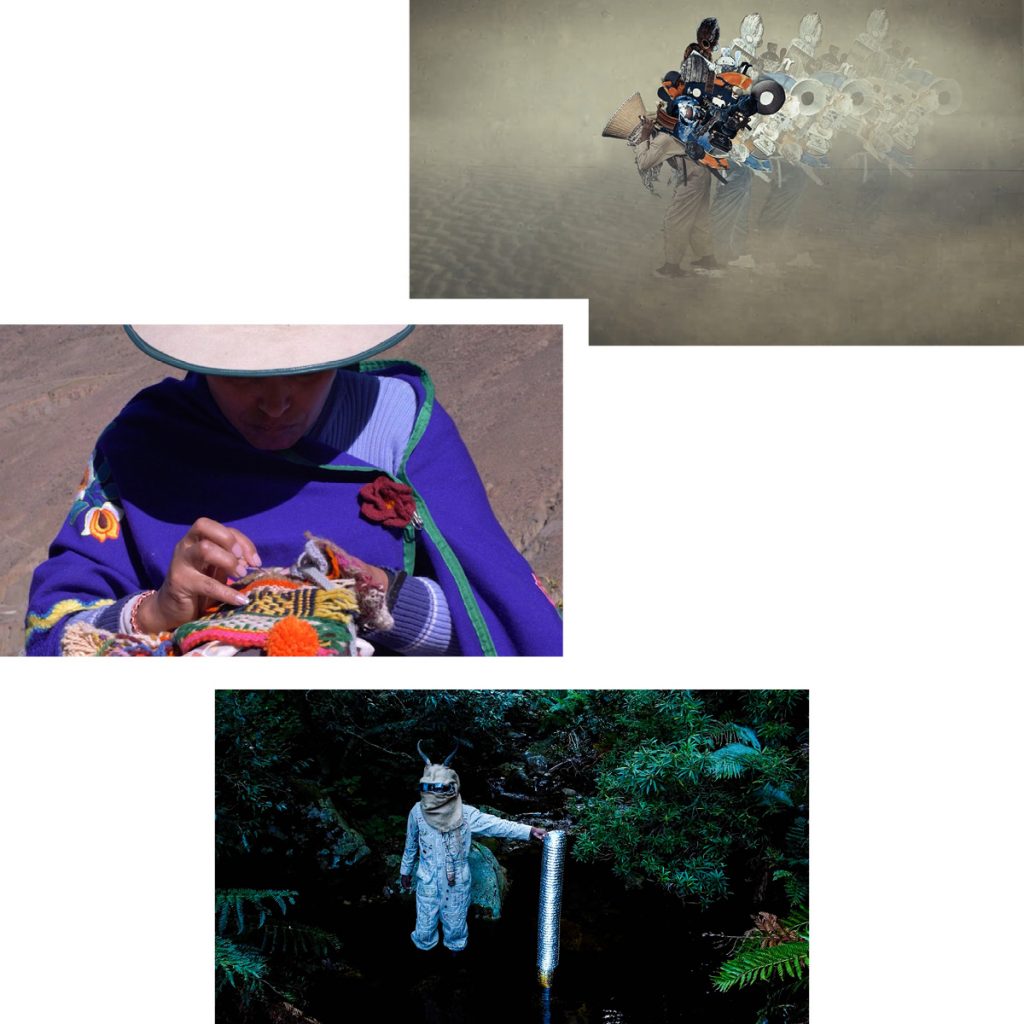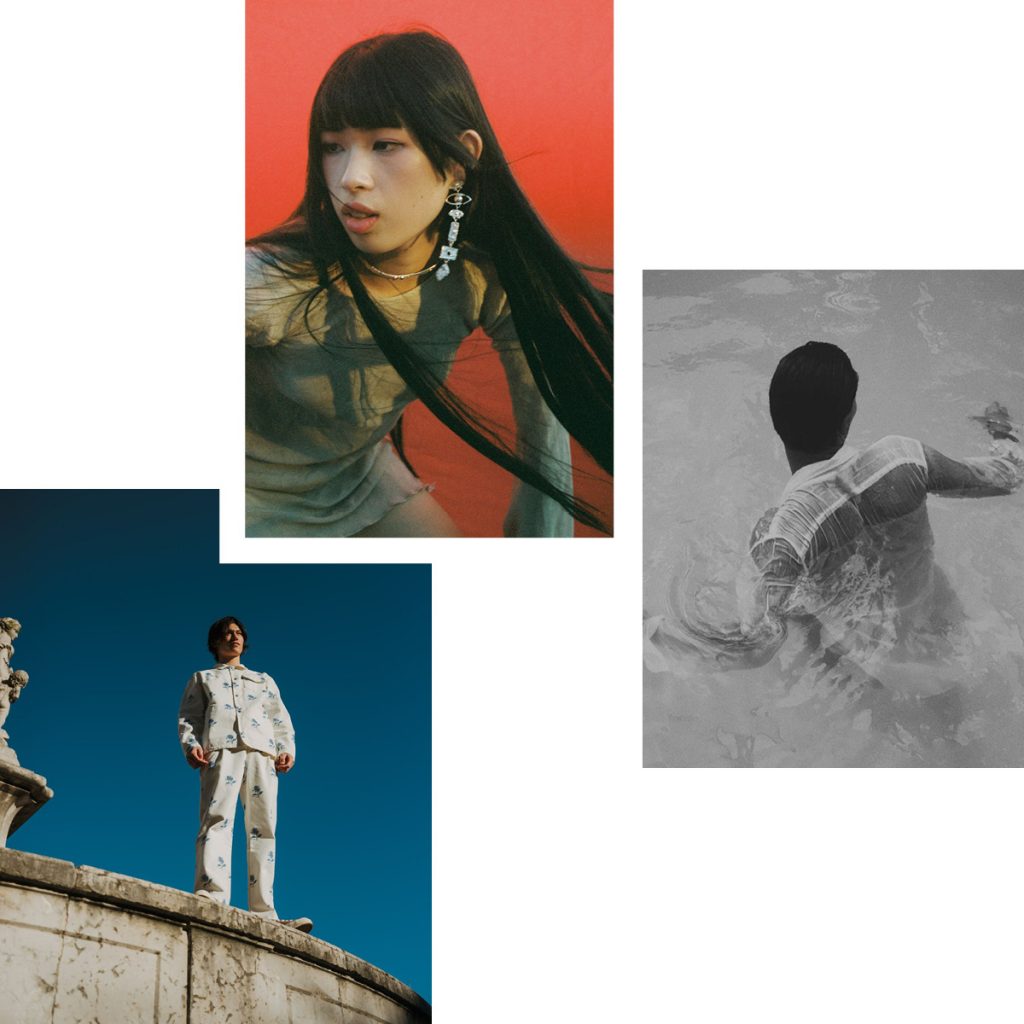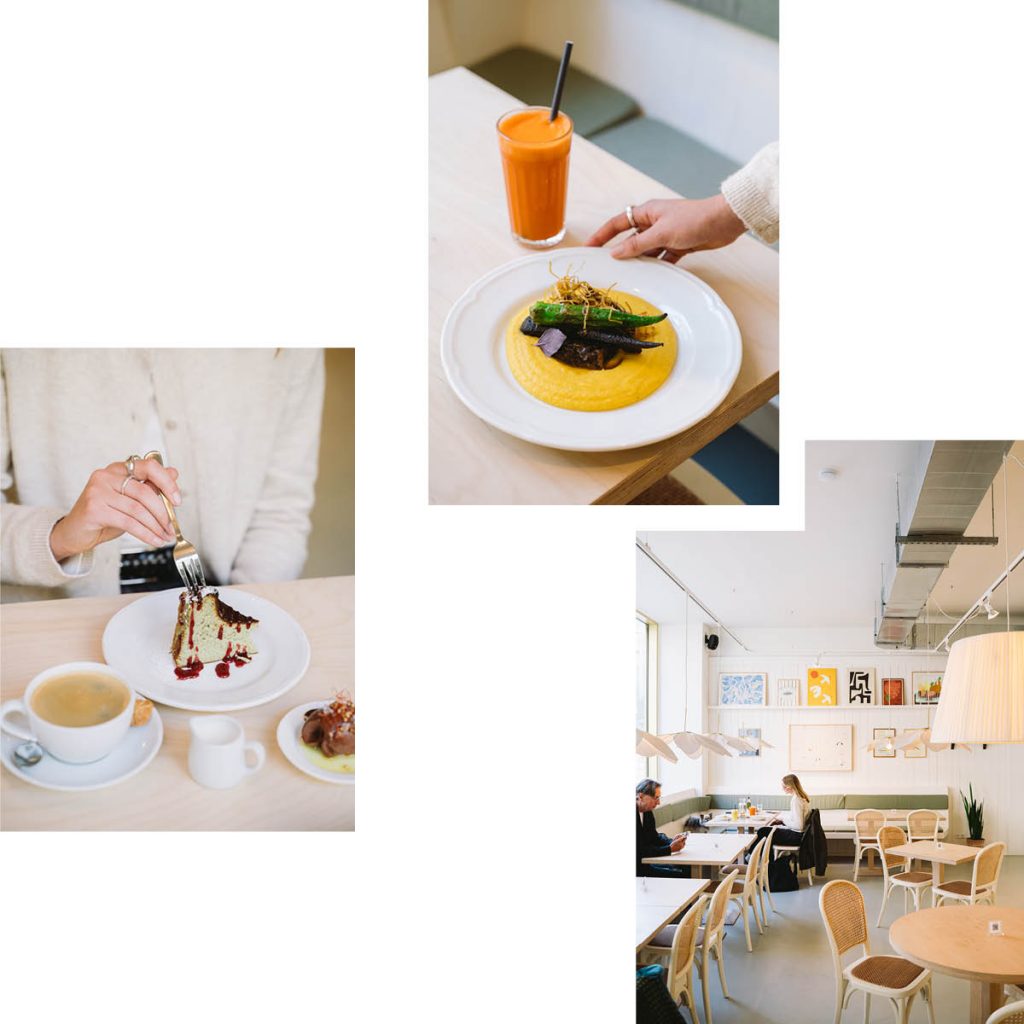
Off Wittenbergplatz and into the hustle and bustle. As soon as I cross the street, I’m met by crowds of shoppers pushing past me. Sometimes the Ku’damm feels like an endless marathon. If you want to escape the chaos, Frizza Bistro has been the perfect setting for a short breather since December 2023. Philip and Paul Piskator, brothers and owners of Frizza, want to convey the feeling of an open, relaxed kitchen. The space transports you to a living room with pictures on the walls and large blackboards. Together with chef Kleant, Philip and Paul have developed a lunch concept reminiscent of home cooking: quick and simple, but particularly tasty and filling. The menu is straightforward and inspired by the brothers’ Italian roots, paired with their new ideas and creations. A favorite is the lasagna rolls, served either with homemade ragout or as a vegetarian option. Pappardelle with pistachio pesto and minestrone are bistro classics, along with desserts such as apple pie with miso caramel sauce or a chocolate crèmeux with olive oil, salt and chili. Other dishes change seasonally, and care is always taken to ensure there are plenty of vegetarian, vegan and gluten-free options.
From time to time, the three of them come up with one or two specials that are only available for a short time, such as the burrata with fresh balsamic figs. If you enjoy wine with lunch, you’ll find what you are looking for here. Like the lunch menu, the wine list is compact and accessible, featuring a selection of natural wines, most of which come from Italy and Germany. Freshly squeezed juices, non-alcoholic cocktails and sodas are available for those who only toast with wine in the evening. With Frizza, Philip and Paul want to prove you don’t have to miss out on fresh, homemade dishes when you’re in a rush. Although the food at Frizza is served quickly, I like to sit here for a while to escape the chaos outside for a few more minutes.
Text & Photos: Robyn Steffen
Frizza, Nürnberger Str.8, 10787 Berlin–Charlottenburg; map
@frizza.kitchen




